|
Home > Camera Reviews > Sony Alpha A7 (ILCE-7/B)

Sony A7
What's Hot: A 1 lb. full frame camera! Well built, very good video capture, plenty of controls.
What's Not: Native lens selection is very weak, photo quality is very good but not brilliant.

Reviewed April 7, 2014 by Lisa Gade, Editor
in Chief (twitter: @lisagade, Instagram lisagadeMTR)
The Sony Alpha A7 is the first ILC (interchangeable lens camera) mirrorless camera with a full frame sensor. Sony started the ILC revolution with the NEX series, and those were impressively small cameras with APS-C size sensors. Think of the 24.3 megapixel A7 as the next logical engineering challenge for Sony, along with the pricier 36 megapixel Sony A7R. A full frame sensor is the largest commonly used digital camera sensor and it's the same size as 35mm's imaging area and 1.5x bigger than the APS-C sensor used in most consumer DSLRs. Given the Alpha A7's small dimensions and 1 pound body weight, that's impressive stuff.
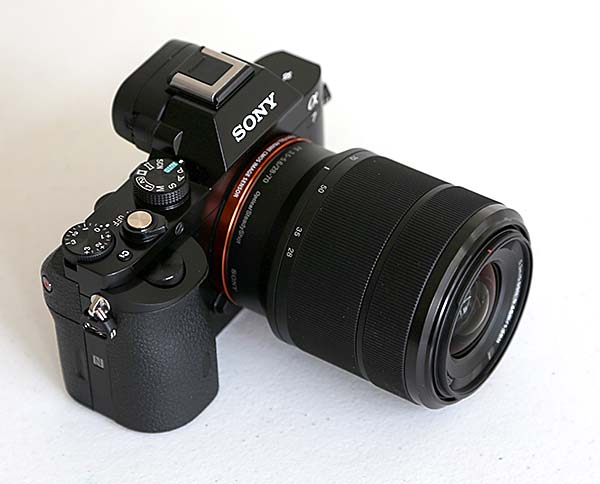
The Sony A7 has two very different audiences: casual photographers with money to spend and a desire for the best equipment possible to capture special vacations and their kids' sporting events and pro/serious hobbyist photographers who are literally tired of carrying around very heavy full frame DSLRs and their related hefty lenses. At $2,000 for the A7 plus kit 28-70mm f/3.5-5.6 lens, the A7 is actually inexpensive for a full frame DSLR (it's not technically an SLR but it competes with them and works the same other than the lack of an internal mirror and pentaprism). The body alone is $1,700, making it $100 to $200 cheaper than the full frame Canon EOS 6D and Nikon D610. But Sony's lenses are pricey and their selection limited, making the camera attractive to pros who have a collection of good glass that they can use with adapters on the Sony A7 and A7R. Casual DSLR buyers rarely try out a second lens, and in the case of the A7, that will be a crying shame.
The camera uses Sony's speedy BIONZ X processor for video and image processing. It has an SD card slot compatible with UHS and SDXC cards, a built-in stereo mic, 3.5mm stereo mic in, headphones out, uncompressed HDMI out and AV out. The magnesium alloy body and Sony FE lenses are weather sealed. The camera doesn't have a flash, so you'll have to use one of Sony's Multi-Interface shoe flashes or lighting units.

Video Too
Like the Sony RX10 camera we recently reviewed, the A7 offers full HD recording in AVCHD format up to 60p. It has continuous autofocus, which is tremendously friendlier than the mostly manual focus experience with DSLRs. Also like the RX10, it captures excellent, pro-quality footage. No, I don't mean Netflix will use it for the next season of House of Cards, but for indie productions and serious YouTube channel production it's good stuff. Though the A7 doesn't sample the full sensor like the RX10 and upcoming Alpha A7S, and instead does line skipping like most DSLR cameras, we found footage more compelling from the A7 in terms of sharpness and resolving power thanks to the bigger sensor, even with the kit lens that can't compete with the permanently attached excellent Zeiss lens on the RX10. Moire was well controlled and our video review includes a test we shot of a waterfall, one of the harder things to shoot with a CMOS sensor camera. Sorry, you're limited to AVCHD at 24p, 60i 24 Mbps and 60p 28Mpbs--those who crave higher quality codecs and higher bitrates will have to look at the Canon EOS 5D Mark III, Canon 6D, Panasonic GH3 and GH4 among others.
Design and Build Quality
This is the ever-popular retro Leica look, updated with big 3" LCD on the back and lots of rear buttons. Those who are old enough to feel nostalgia for yesterday's well made street cameras will undoubtedly find the Sony A7 attractive; I know I love its looks. It's edgy, angular and a bit shiny on the top, and the textured grip feels good, albeit small. The magnesium alloy, weather sealed body looks, feels and is rugged yet diminutive. It looks like an expensive camera, and frankly it is.
Though not as small as Sony's NEX series of ILC APS-C sensor cameras, the A7 and nearly identical A7R, are considerably smaller than today's most compact full frame cameras from Nikon and Canon. The Canon 6D weighs 1.7 lbs. and the Nikon D610 weighs 1.9 lbs. making the 1 lb. Sony simply incredibly light in comparison. If you've carried around full frame and even some of the larger APS-C DSLRs, you're familiar with the constant neck ache and heavy nerd bag for camera and kit. Now you see the charm of the alpha A7. The new FE mount lenses are relatively light compared to the equivalent (in quality) competition from Nikon and Canon. Better lenses are larger and heavier, and Sony's 5 FE non-kit lens are all high quality stuff, yet like NEX lenses, they're not monsters to carry.
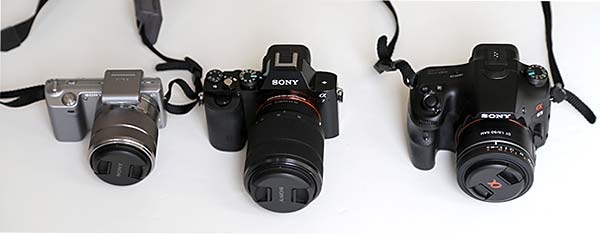
The Sony NEX 5, Alpha A7 and Sony Alpha a65.
The small grip is a pain point for those with larger hands, and the oddly placed shutter button that's set back from the front of the grip to make room for a front dial is simply awkward. If it's your only camera, you'll get used to it. But if you switch between the A7 and other cameras, you'll be pressing in the wrong place for the first few shot attempts. The camera has front and rear horizontal rotary dials on the top, Sony's wonderful EV wheel (+/- 3 EV in 1/3 EV steps) up top, the usual mode dial (PASM,video, panorama, auto and two customs), a custom button but no top LCD (where would Sony fit one on this tiny camera?). The back has an automatic/manual focus switch, AE lock, Fn (quick access to available shooting settings), playback, delete, two more custom buttons and the usual wheel style control for navigating the standard Alpha-style menu system. Note that the rear LCD isn't touch, so you'll be using that wheel to use the menus. That 921,600 dot rear LCD is bright and sharp (there's an outdoor mode and it works). It's articulated so it can tilt up/down but it doesn't swivel sideways or rotate below the camera body as on bigger Alpha models.
|
Deals and Shopping:
Advertisement
|
|
Sony Alpha A7 Video Review
Through the Viewfinder, Not a Sports Photographer's Camera
The 2.4 million dot XGA EVF (electronic viewfinder) is a Sony OLED masterpiece. It's bright, extremely sharp and covers 100%. I admit I still prefer an optical viewfinder for its more natural look and lag-free representation of what the lens sees, but mirrorless camera design precludes an optical viewfinder. Action photographers typically prefer traditional DSLRs because that lag, no matter how small, in electronic viewfinders can mean missing that perfect shot. Continuous shooting and quick autofocus can mitigate the issue, but the alpha A7 with 10 ounce kit lens isn't a fast focusing camera and the 2.5fps shooting speed is relatively slow. Sony provides a "speed priority mode" that can do 5fps, but it seems to do initial AE and focus lock at the first frame, which isn't ideal. Shooting with continuous autofocus and exposure adjustments on the fly means going with 2.5fps.
Lenses, the Good, the Bad and the Expensive
Long time photographers with a collection of lenses and perhaps a fondness for manual focus will find the Sony A7 and A7R incredibly versatile cameras because you can use a variety of lenses including Leica M, Canon and Nikon full frame lenses with these two Sony cameras. There's a catch: you'll have to buy the proper adapter, and some work better than others. Metabones makes adapters with autofocus support for around $300 each. Sony sells the $200 LA-EA3 and $350 LA-EA4 adapters so you can use Sony A mounts lenses with the A7 and A7R (don't get the EA1/EA2, those are for the APS-C NEX cameras). Drawbacks? The adapters are expensive, somewhat bulky and they add weight--you bought the A7 because it was small and light, right? Add the wonderful but hefty and bulky (relative to Sony FE lenses) Canon 24-105mm f/4 lens and adapter, and you've got a lot hanging on your neck again. But for those with some classic glass, the A7 is a way to find an exciting new life for old and dear friends.
Sony's initial selection of FE mount lenses (like E mount lenses but full frame, hence the "F" in front of the "E") remind me of the NEX story several years ago when there were few native lenses to choose from and some were oddball rather than staples. The kit lens is the only really affordable lens at $500. It offers 3x zoom range of 28-70mm and a just average aperture of f/3.5-5.6. The lens has optical image stabilization, internal focus and it doesn't trombone when zoomed. Our copy had the usual barrel distortion, but pleasing colors and decent sharpness at f/8-- it's a surprisingly decent lens given the price, size and weight. The step-up is the $1,200 FE 24-70mm Zeiss T* with a constant f/4 aperture. That's a nice short zoom, with the usual price plumping we see with Zeiss lenses (but they are great glass). There's a recommended Zeiss FE 55mm f/1.8 for a scary $1,000, but it is extremely sharp and gets great colors (this is one of the best lenses I've shot with on any camera). For street and landscape photographers, there's the Zeiss FE 35mm f.28 and lastly the $1,500 longer zoom 70-200mm f/4 with OSS. Note that the zoom lenses have OSS (particularly important for video) but the primes don't.
Lastly, you can use Sony NEX E mount lenses with the A7--no adapter required. The camera can automatically drop resolution to 10MP or if you turn that feature off, it will shoot with vignetting (the degree varies with the lens). I tested the A7 with the Sony E mount 50mm f1.8 ($299, not Zeiss but sharp) and the vignette isn't that bad. One could certainly shoot wider and crop to use the sharp center area. But honestly, tempting as it might be to repurpose your NEX E mount lenses, I don't think using them with the A7 makes a great deal of sense. It defeats the point of full frame if you drop the resolution down to 10MP, and I'd take the higher pixel density of those same lenses used with a Sony NEX over the A7. If you're OK with dealing with the compositional requirements of vignetting, I'd only use the NEX lenses with the A7's auto function for E mount lenses turned off.
|
Advertisement
|
Focus and Image Quality!
Nothing matters more than the quality of images and video that a camera captures. As noted, 1080p video quality is excellent, with relatively little moire and quick focus times. The hybrid focus system comprised of standard contrast detection 25 point autofocus plus 117 point phase detection autofocus get the job done well. You'll see a half second here and there where the camera re-focuses as you pan near-to-far (or vice versa), but all said, it works well for video. For photos, the A7 has tough competition in the world of full frame sDSLRs and even APS-C models from Nikon, Canon and Sony (Alpha SLT) . DSLRs, even those using the more common contrast detection autofocus system are fast focusing beasts, and we felt the Sony lag behind. Low light particularly was a sore point, though speed improved when we turned off the amber focus illuminator. I tried to capture lightning lit clouds at twilight and the Canon EOS 6D did an admirable job while the Alpha A7 absolutely refused to focus and locked out the shutter button until I switched to manual focus and focused at infinity.
The lens in part determines image quality, and the SEL2870 kit lens doesn't show off the capabilities of the A7 as well as a higher end lens. We tested with the Zeiss FE 55mm f/1.8 lens (a much better piece of glass) and saw sharper photos and better corners along with somewhat more vibrant Zeiss colors. We also tested with the Sony E mount 50mm f1.8 and 18-55mm f/3.5-5.6. The E mount lenses were sharp in the center (particularly the 50mm) and offered decent colors (neither are Zeiss lenses). We did most of our shooting with the kit lens and the 24-70 f/4 Zeiss and noted Sony's trademark cool colors and high contrast--both currently trendy in today's Instagram-loving world. Confession: I prefer warmer colors because they strike me as more natural and "alive". The Sony's images, unlike those from the Canon 6D and Nikon D600, didn't strike me as having the same dimensionality and liveliness, though they were sharper and had more dynamic range thanks to the excellent sensor. If I were to pigeonhole it, I'd say the A7 is a great urban and street camera thanks to detail, contrast and a sense of surgically precise coolness. It did excel at capturing an amazing amount of sharp detail in bit RAW files with lots of room in shadows to bring out details. Depth of field even with the small aperture kit lens is possible at the tele end thanks to the full frame sensor, and the kit lens' 7 blade circular aperture made for decently pleasing bokeh and background blur.
Some reviewers have complained about focus issues, and perhaps that's due to the nature of the beast: the bigger the sensor the more still you need to hold the camera. With a camera this light, it's easy to treat it like a point and shoot and wave it around more when shooting. Don't do that! Keep perfectly still or use a tripod and you'll get incredibly sharp and detailed photos. Sony has issued several firmware updates since release, and some address focus.
Sample Image Gallery
Click on the gallery below to see larger images in a new window.
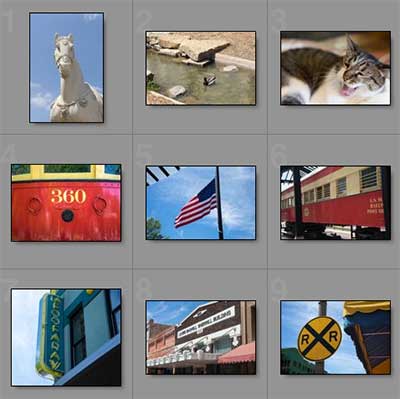
Battery and Wireless
Sony's small-bodied ILC cameras aren't Energizer bunnies, and the A7 is no exception. It uses the same NP-FW50 1080 mAh W series InfoLithium battery as the NEX and Sony RX10 cameras and it averages 300 shots. Like the RX10, Sony includes a USB cable and USB charger so you can charge the battery in the camera. No external charger is included (it will set you back $50 to $60), and that seems wrong for a camera in this price range and target audience. Yes, it's great to be able to charge the battery on the go using a car charger, but there's no efficient way to charge a spare unless you buy the external charger (or borrow your NEX charger, if you own that camera too). USB charging is slow and you can't use the camera while it's charging. Argh.
The camera has WiFi and NFC to aid in pairing smartphones and tablets. Sony makes Android and iOS apps so you can remotely control the camera for photo shooting but not video. Pro tip: turn off WiFi when you don't need it to conserve battery life.
Conclusion
There's simply nothing like it: a full frame DSLR competitor in a body that's barely bigger and heavier than Sony's NEX (soon to be Alpha a5000 and a6000) ILCs. If you need big image quality but don't want to haul big gear around, the A7 and A7R are the answer. Of course, if you load them up with lens adapters and big non-native glass, that portability declines, but you're still shaving more than a half pound of weight from your kit. The native Sony FE lenses are expensive and limited at launch, and that hurts. Even more painful is the fact we've got yet another lens line to buy into in a world where serious photographers hold onto their dearest lenses for decades while swapping through several bodies.
RAW and JPEG images are extremely sharp and detailed, with good dynamic range and noise levels are good. Sony's overkill JPEG noise reduction can make an ISO 6400 shot look like ISO 400, at the expense of some lost detail, but casual and hobbyist photographers will likely find it a godsend and pros will use RAW format to keep fine details intact. Video quality is excellent, and the mirrorless advantage is continuous autofocus so you don't have to pull focus when filming. Given its portability and subtlety-- it doesn't scream "I have a camera!" until you activate the extremely rowdy shutter--it's a great street camera.
Price: $1,699 body only, $1,999 for body and 28-70mm kit lens
Website: www.sony.com
More Camera Reviews:
Sony a6000 video review
Sony RX10 Review
Sony RX100 IV Review
Fujifilm X-T10 Review
Canon PowerShot G7X Review
Canon EOS 6D Video Review
Sony NEX 5 Review (the first NEX camera) |

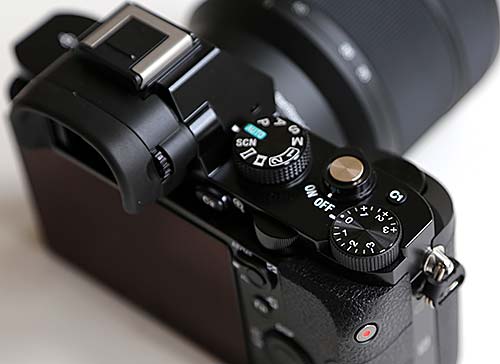
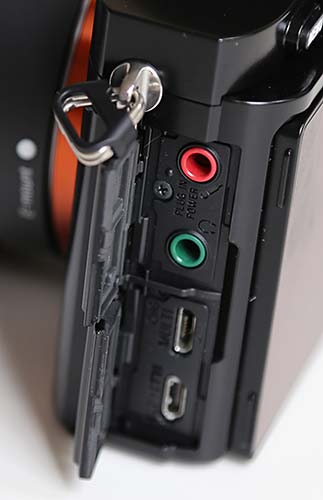
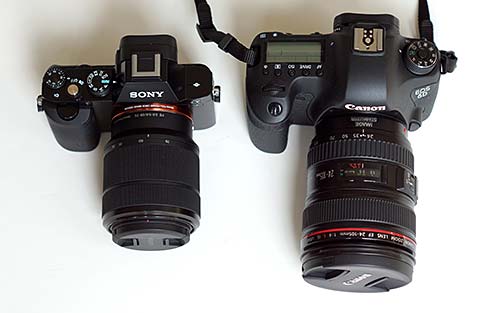
Directly above: the Sony A7 and Canon EOS 6D full frame digital cameras. |
|
Specs:
Size and Weight:
Weight (body only): 14.7 oz. (416 g)
Dimensions (Approx.) : Approx. 5 3-3/4 1-15/16" (126.9 x 94.4 x 48.2 mm) (W/H/D) excluding protrusions
Weight (Approx.) : With battery and Memory Stick PRO Duo Approx. 1 lb. 0.7 oz. (474 g)
Feaetures:
Image Stabilization : Lens-based (where applicable)
Auto High Dynamic Range : Yes, (Auto Exposure Difference, Exposure difference Level (1-6 EV at 1.0 EV step), off)
Sweep Panorama : Horizontal (Wide / Standard), Vertical (Wide / Standard)
Anti Motion Blur : Yes
Face Detection : On, Off, Face Registration, Face Selection; maximum eight faces detected
Priority Setting (for Face Detection) : Yes (eight faces max)
Tracking Focus : Yes
Sensor and Processor:
Pixel Gross: 24.7 Megapixels (approx.)
Color Filter System: RGB primary color filters
Effective Picture Resolution: 24.3 Megapixels (approx.)
Imaging Sensor: Exmor CMOS sensor (35.8 x 23.9mm)
Processor: BIONZ X image processor
Focus:
Focus Features : Lock-on AF, Eye AF, Predictive control, Focus lock, Eye-start AF (only available with optional LA-EA2 or LA-EA4 attached), AF illuminator (built-in, LED type, range: Approx. 0.30-3m, AF micro adjustment, AF ON
Manual Focus Assist : 35mm full frame: 7.2x, 14.4x APS-C: 4.7x, 9.4x
AF Illuminator: Yes (with built-in LED type)
Focus Sensitivity: EV 0 to 20 EV (at ISO100 equivalent, with F2.8 lens attached)
Focus Area: Multi Point (25 points) / Center-weighted / Flexible Spot (S/M/L) / Zone
Focus Points: 117 points (phase-detection AF), 25 points (contrast-detection AF)
AF Modes : Single-shot AF (AF-S), Continuous AF (AF-C), Direct Manual Focus (DMF), Manual Focus
Focus System: Hybrid AF (phase-detection AF / contrast-detection AF)
LCD:
Peaking: Yes (Level setting: High / Mid / Low / Off, Color: White / Red / Yellow)
Real-time image adjustment display : Yes (On / Off)
LCD Type: 3.0" (7.5cm) TFT LCD (921,600 dots) with tiltable design
Coverage: 100%
Histogram: Yes (On / Off)
Live View: Continuous Live View
EVF:
Type: 1/2-inch (1.3 cm) XGA OLED color electronic viewfinder (2,359,296 dots)
Field of View : 100%
Magnification: Approx. 0.71x with 50 mm lens at infinity, -1m-1 (diopter)
Diopter Adjustment : -4.0 m-1 ~ +3.0m-1 (diopter)
Battery:
Battery Type: InfoLITHIUM NP-FW50, 1080 mAh
Power Requirements: One rechargeable battery pack (NP-FW50)
Number of Still Images: Approx. 340 images with LCD monitor (CIPA standard)7
Still and Video Recording:
Panorama Still Image Size : Horizontal Wide: 12,416 x 1,856 (23M) Horizontal Std: 8,192 x 1,856 (15M) Vertical Wide: 2,160 x 5,536 (12M) Vertical Std.: 2,160 x 3,872 (8.4M)
Video Resolution: AVCHD(TM): PS - 1920 x 1080/60p@28Mbps FX - 1920 x 1080/60i@24Mbps FH - 1920 x 1080/60i@17Mbps FX - 1920 x 1080/24p@24Mbps FH - 1920 x 1080/24p@17Mbps MP4: HD - 1440 x 1080/30p@12Mbps VGA - 640 x 480/30p@3Mbps
Audio Format: Dolby Digital (AC-3) / MPEG-4 AAC-LC
Video Mode: AVCHD format Ver. 2.0 compliant / MP4
Color Space: Still: sRGB standard (with sYCC gamut) and Adobe RGB standard
Still Image Size 16:9: 35mm full frame: L: 6000 x 3376 (20M), M: 3936 x 2216 (8.7M), S: 3008 x 1688 (5.1M) APS-C: L: 3936 x 2216 (8.7M), M: 3008 x 1688 (5.1M), S: 1968 x 1112 (2.2M)
Still Image Size 3:2 : 35mm full frame: L: 6000 x 4000 (24M), M: 3936 x 2624 (10M), S: 3008 x 2000 (6.0M) APS-C: L: 3936 x 2624 (10M), M: 3008 x 2000 (6.0M), S: 1968 x 1312 (2.6M)
Still Image Mode: RAW, RAW & JPEG, JPEG Extra fine, JPEG Fine, JPEG Standard
Media Type: Memory Stick PRO Duo, Memory Stick PRO-HG Duo, Memory Stick XC-HG Duo, SD memory card, SDHC memory card (UHS-I compliant), SDXC memory card (UHS-I compliant)
Microphone/Speaker: Built-in stereo microphone or ECM-CG50 / XLR-K1M (sold separately) / Built-in monaural speaker; volume settings in 8 steps between 0 and 7
Still Image File Format: JPEG (DCF Ver. 2.0, Exif Ver.2.3, MPF Baseline compliant), RAW (Sony ARW 2.3 format)
|
|
|
|







